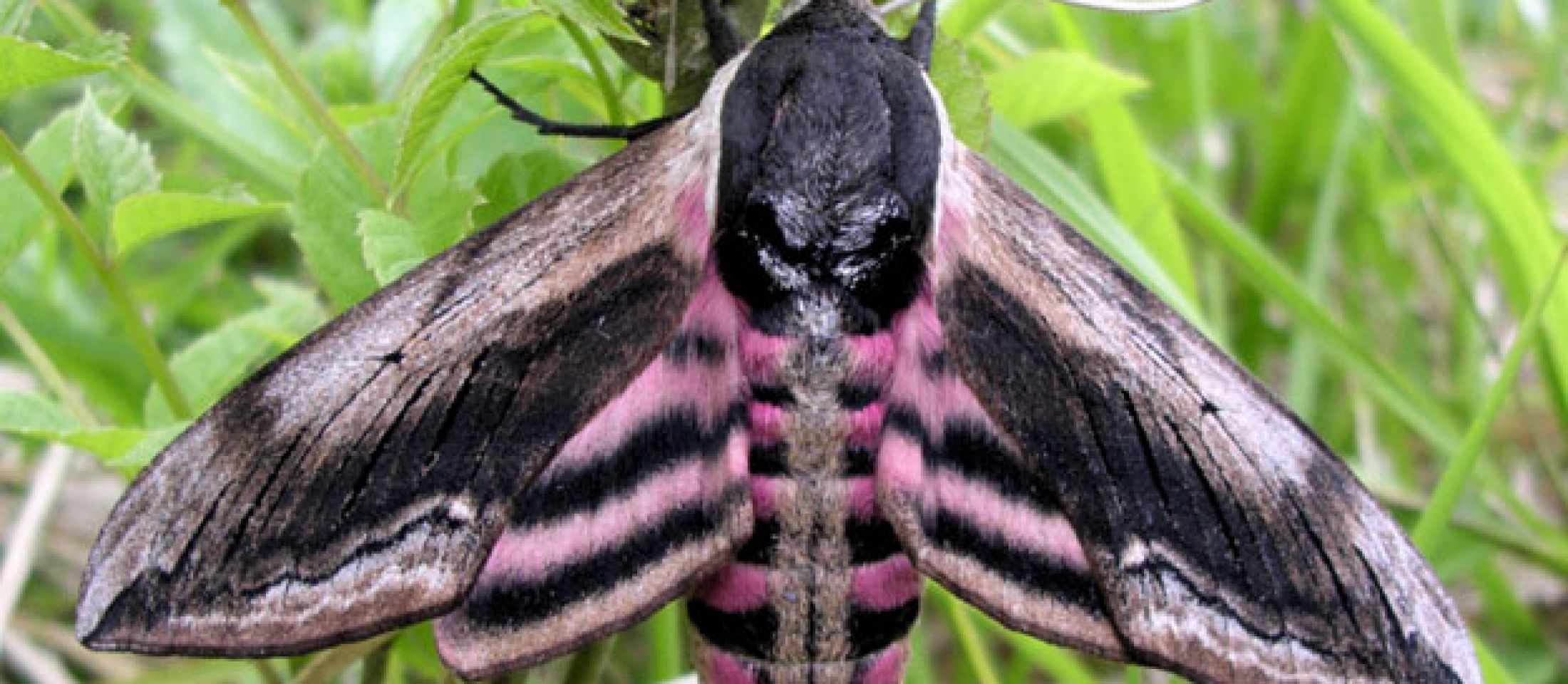
Hawk Moth. Photo: Tony Harwood

Hawk Moth. Photo: Tony Harwood
Ash is a food-plant for the caterpillar of the privet hawk moth our largest, and arguably most handsome, resident hawk moth.
The references to privet(Ligustrum) within both the common and scientific names of Sphinx ligustri are a misnomer. Privet is, or at least was, a common garden hedging plant and thus offers perhaps the greatest opportunity for contact between people and this magnificent moth, or more specifically its caterpillar.
However, the most frequent, but less obvious food plant in the ‘wild’ is ash, usually saplings and the bushy low re-growth from coppice and pollard trees. The almost snake-like caterpillars of the privet hawk moth, with their fresh green flanks slashed with flashes of mauve and white, are remarkably well camouflaged – despite their impressive size. Indeed, it is their hard dry, geometric, almost graphite-like frass (or droppings) which often give its presence away during the summer months (with mid to late July being the optimum time for a sighting).
The magnificent privet hawk moth is not alone in feeding on both privet and ash, which both belong to the Oleaceae family. Indeed, as ash dieback ebbs and flows across our landscape, wild privet (Ligustrum vulgare) should become a favoured shrub species within land management interventions and new planting schemes, to provide a refuge for the privet hawk moth and those other species being negatively affected by the ash decline.
Image 1 Privet hawk moth.
Image 2: Privet hawk moth caterpillar on pollard ash regrowth (Maidstone, July 2017).
Image 3: The geometric forms of privet hawk moth caterpillar frass (Maidstone, July 2017).